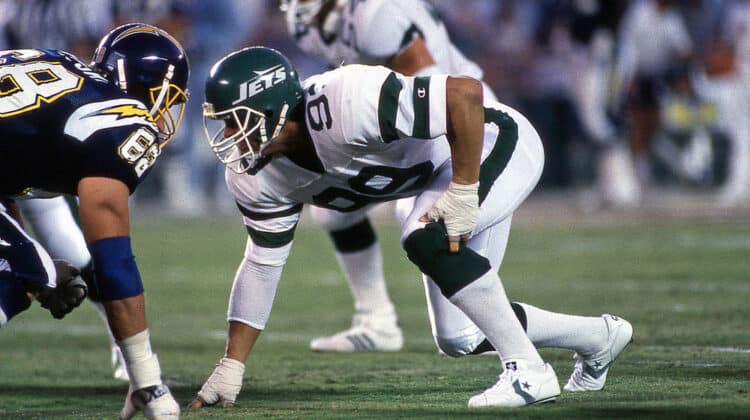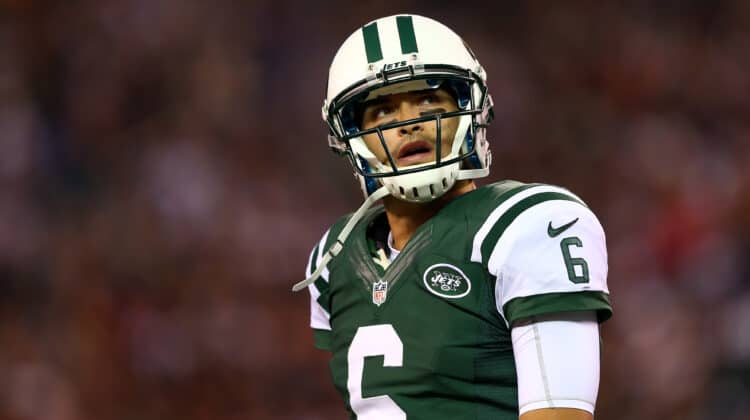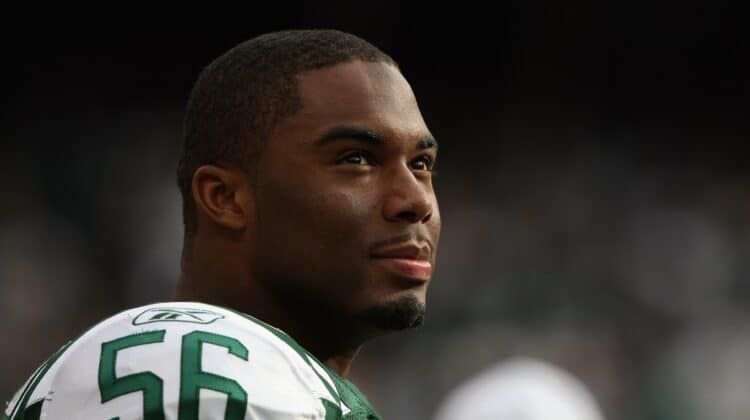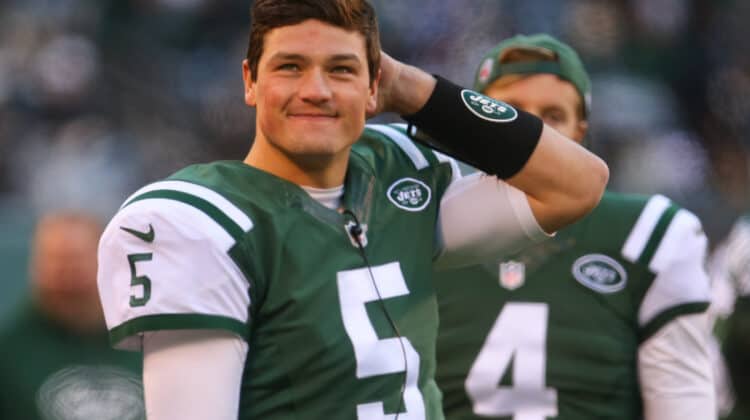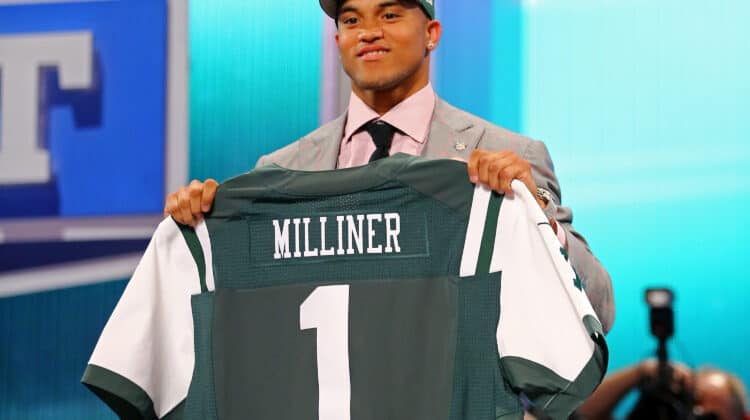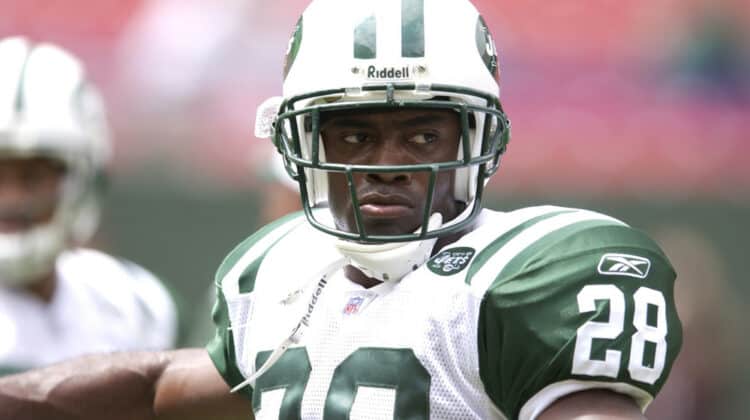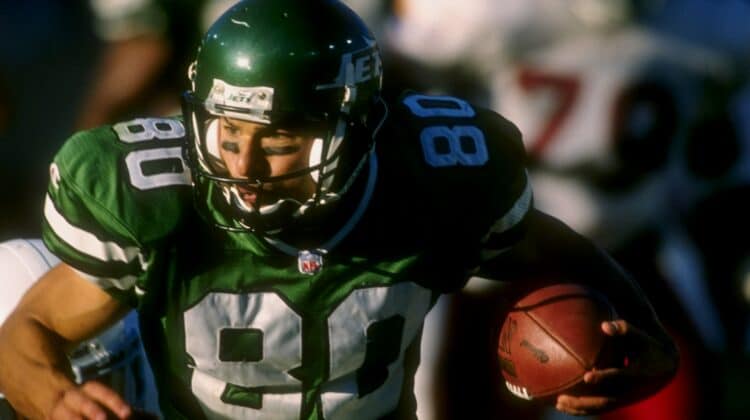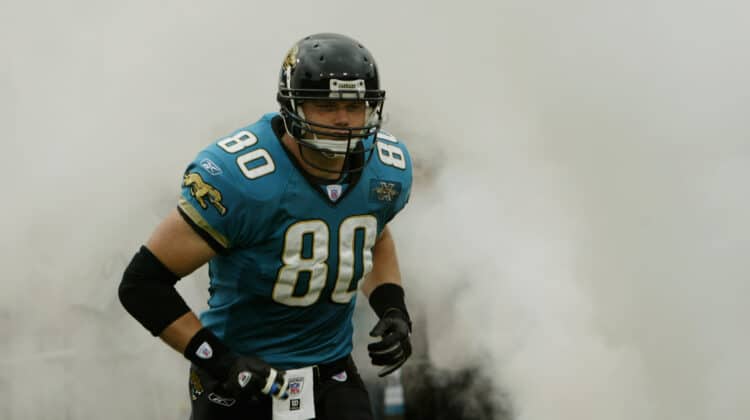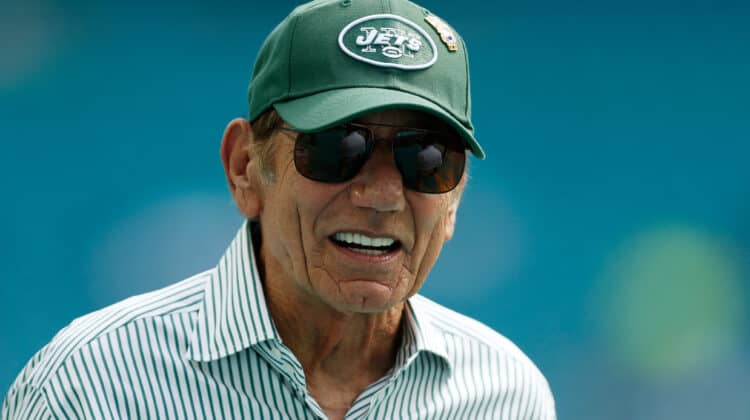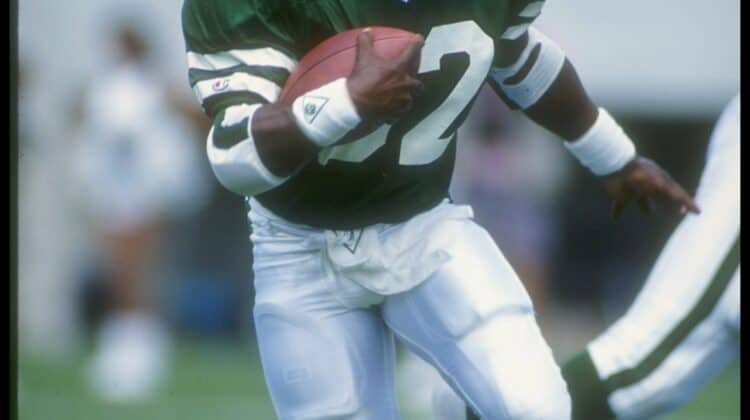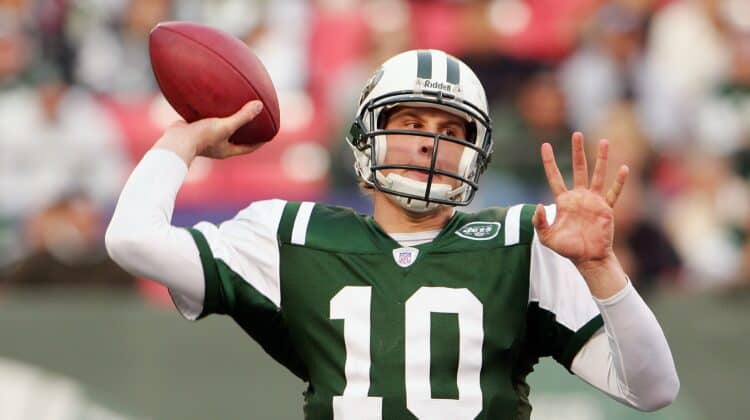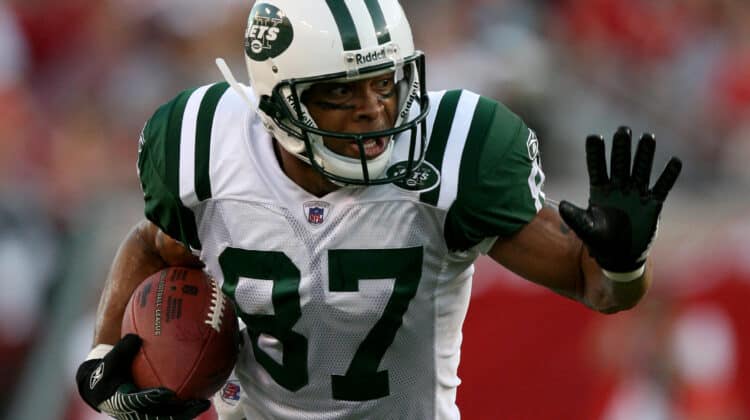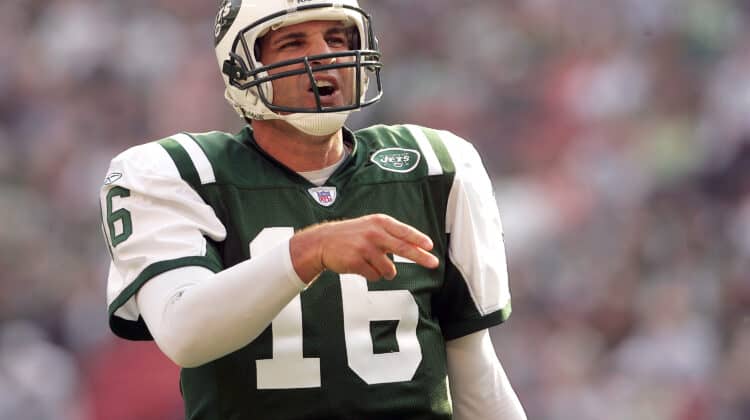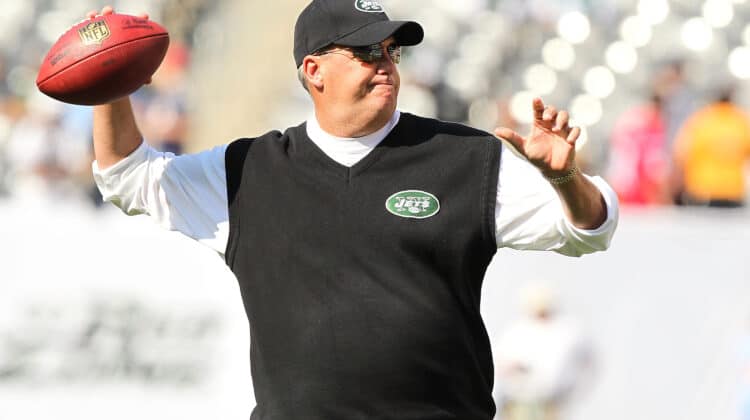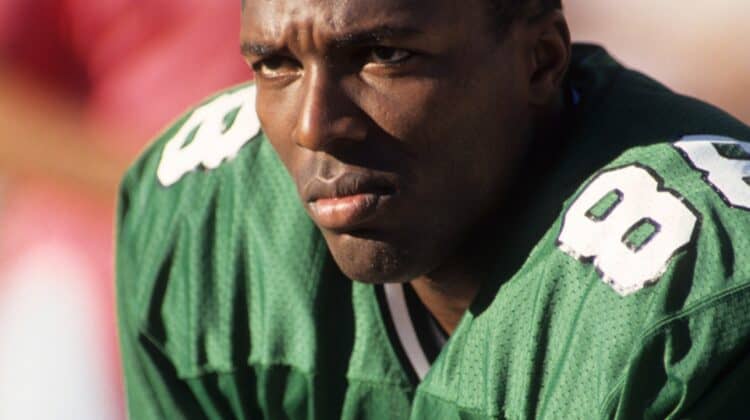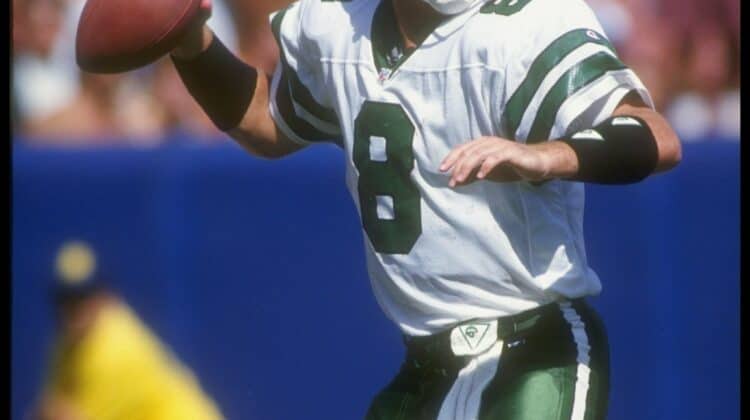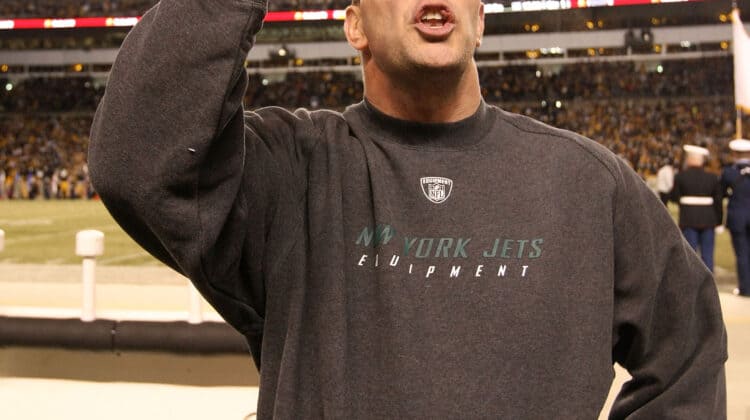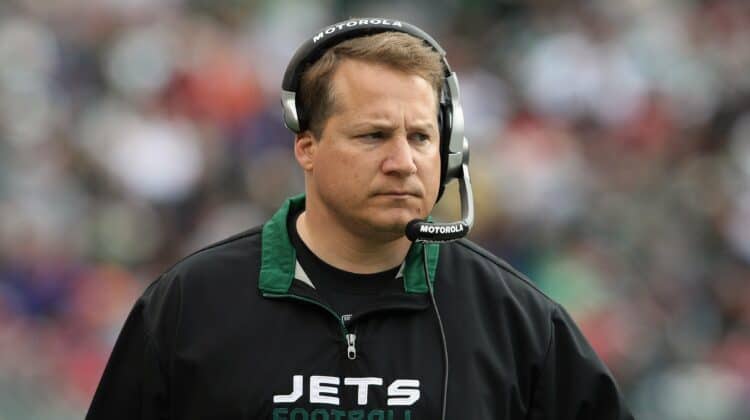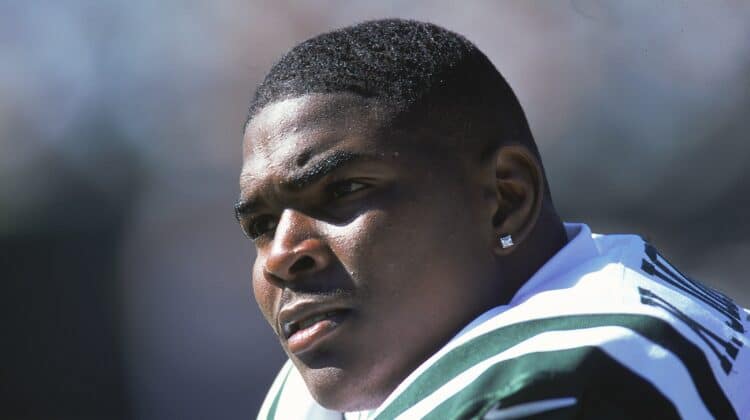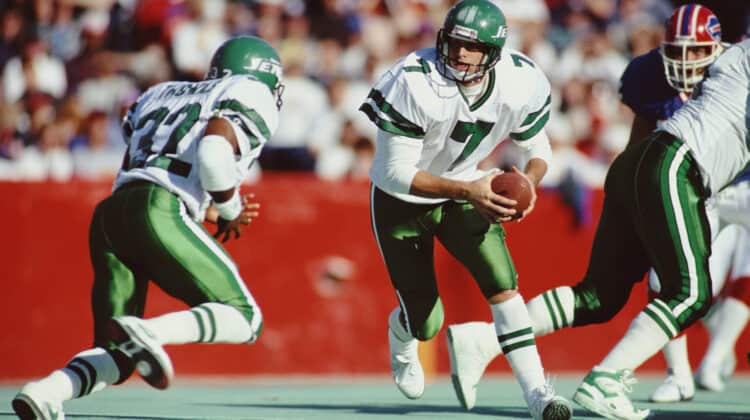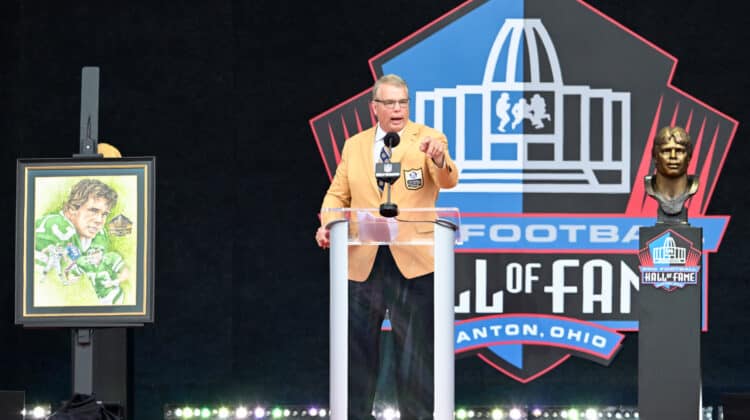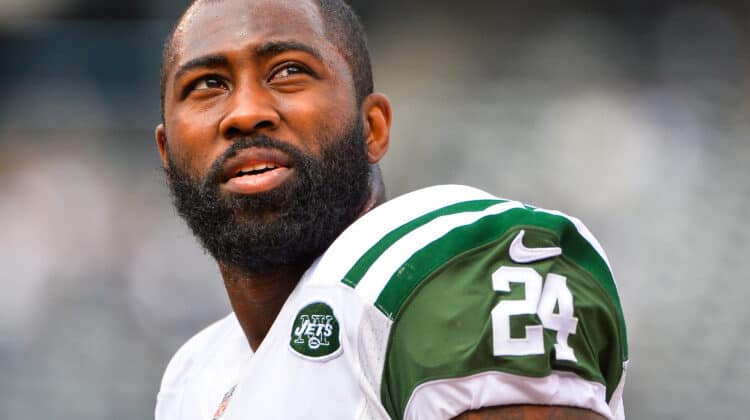
Matt Snell wasn’t your typical running back—he did whatever it took for the New York Jets to win football games in the mid-to-late 1960s.
In fact, Snell not only ran for 121 yards and the Jets’ lone touchdown in their legendary victory over the highly-favored Baltimore Colts in Super Bowl III, but he also did a little bit of everything in that game.
Snell blocked, caught passes, and even covered the punt and kickoff returns in the Jets’ 16-7 triumph against Johnny Unitas’ Colts on January 12, 1969. It was a performance unheard of in pro football history.
Simply put, Matt Snell was one of the main reasons behind the New York Jets’ lone Super Bowl title to date.
Early Life
Matthews Snell was born to parents Isaac and Annie in Garfield, GA on August 18, 1941.
According to Bob Lederer’s 2018 book, Beyond Broadway Joe: The Super Bowl Team That Changed Football (via Deadspin.com), Snell grew up following the New York Giants.
Ironically, Snell had a chance to play for his favorite team when he entered the professional football ranks in 1964. However, he chose to wear New York Jets green and white instead.
Snell’s mother Annie never wanted him to play football at any level. She asked her son several times if he would quit during his nine-year pro football career.
On the other hand, his father Isaac told her to let their son do whatever he wanted to do.
Snell attended Carle Place High School in Long Island, NY.
Snell excelled in the ground attack from the get-go—he was the Carle Frogs’ starting right halfback during his high school football career. The Frogs lost just two games when Snell was in the starting lineup.
Thanks in large part to Snell’s exploits at halfback, Carle High went undefeated in the 1958 and 1959 seasons.
Snell won the 1959 Thorp Award, an accolade given to the best high school running back in Nassau County.
Matt Snell took his act to the midwest and emerged as one of the best running backs in the country with the Ohio State Buckeyes.
College Days With the Ohio State Buckeyes

Matt Snell attended Ohio State State University from 1960 to 1963. He suited up for legendary Ohio State Buckeyes head football coach Woody Hayes for three years.
According to Lederer, Snell became the first member of his family to go to college. Annie Snell knew OSU was the right fit for her son after they offered him a scholarship that wasn’t dependent on his college football career.
Hayes promised her that Matt would earn his bachelor’s degree if he studied hard, showed up for classes, and attended tutoring sessions, if necessary.
Matt Snell set a new standard for his family members. Since he first stepped on Columbus, OH soil in the fall of 1960, his siblings strived to attend college as well. It was a goal Snell ultimately passed down to his children.
Moving over to football, I got back former Ohio State Buckeye and should-have-been-MVP of Super Bowl III, Matt Snell. #TTM #TTMAutographs #ttmsuccess pic.twitter.com/5r2bocJi43
— DFWGrapher (@DFWGrapher) November 30, 2020
On the college gridiron, Hayes and his team never recorded the 40-yard dash times of Snell and the other Buckeyes position players.
“At Ohio State all the skill position players had to do was run a mile in less than seven minutes,” Snell told Lederer (via Deadspin.com) in 2018.
When Snell turned pro in 1964, he ran the 40-yard dash in 4.6 seconds.
Snell experienced Jim Crow laws firsthand in his first game as a senior at Ohio State in 1963.
Snell’s Buckeyes squared off against the all-white TCU Horned Frogs on that day. Snell told Lederer some 55 years later that the TCU players had never gone up against a team with black players.
“One said, ‘You guys are pretty good,'” Snell recalled. “I asked them a couple of times, ‘What do you mean, ‘You guys?’ Who’s ‘You guys?'”
Ironically, Snell didn’t know what the football draft process entailed after his senior year at Ohio State, per Lederer.
Snell had 688 rushing yards and six rushing touchdowns during his three-year tenure with the Buckeyes from 1961 to 1963.
Ohio State averaged six wins per season during that three-year time frame. They promptly extended their bowl game drought to six seasons.
After Matt Snell played his final down in Columbus, OH, he returned to the Empire State where he emerged as one of the most versatile running backs in New York Jets’ franchise history.
Pro Football Career

The New York Jets made Matt Snell the third overall selection of the 1964 American Football League (AFL) Draft.
The New York Giants, the Jets’ crosstown rivals, made Snell the 49th overall selection of that year’s National Football League (NFL) Draft.
Both the Jets and Giants went the extra mile so they could acquire the player.
The Giants were coming off a loss to the Chicago Bears in the NFL Championship Game the previous year. New York wanted some young blood to beef up its aging roster. Matt Snell was the perfect prospect.
Former Giants safety and then-scout Emlen Tunnell met with Snell in Columbus, OH. He dangled a multiyear contract in front of Snell. However, Snell would have to play behind veteran running backs Alex Webster, Dick James, and Joe Morrison for several years and learn the ropes of the pro game.
Snell met one of the Mara family members, who owned the New York Giants, sometime later.
When Snell met Jets principal owner Sonny Werblin, his predicament was completely different—Werblin told Snell he would become one of the Jets’ starting running backs right away.
Not only that, but Werblin also envisioned Snell becoming one of the main components in the Jets’ hopeful win of a title within the next five years.
Snell was in a bind. Although he was going to play pro football in his home state, he didn’t know what team he should suit up for.
According to Lederer, Snell reached out to his Ohio State Buckeyes head football coach Woody Hayes and his position coaches shortly after the Jets drafted him.
They advised him to wait for the NFL Draft proceedings to unfold. Regardless of Snell’s choice—the Jets or Giants—he would have jeopardized his scholarship at Ohio State if he brought an agent to Columbus, OH.
Consequently, Woody Hayes became Matt Snell’s de facto pro football advisor. Hayes told the latter to bring both the Jets and Giants contracts to him so he and his position coaches could review them.
The Giants offered Snell a salary of $12,000 and a $12,000 bonus. The Jets took it several notches higher with a $20,000 salary and a $30,000 bonus.
Matt Snell turned 81 today…
Maybe the most important player in AFL history as him signing with the Jets over the Giants in 1964 showed the New York City big media players the AFL was serious…hence NBC giving the AFL a big bump in TV money pic.twitter.com/GOFC91Ki0E
— PolyesterPalace (@PolyesterPalace) August 19, 2022
Matt Snell ultimately decided to sign a one-year contract with the Jets not just because of the money, but also because of the attention principal owner Sonny Werblin gave him, per Lederer.
The Southwest Challenge Bowl on January 4, 1964, became a defining moment in Matt Snell’s pro football career.
The college football game featured the Southwest All-Stars against their National All-Star counterparts. Since the Jets drafted Snell as an outside linebacker, he would play on that side of the ball.
For some reason, one of the fullbacks didn’t show up for the game. National All-Stars head coach (and the Oakland Raiders head coach at the time) Al Davis asked Snell to play the position of a blocking fullback.
Lo and behold, Matt Snell had 117 rushing yards and four touchdowns in the National All-Stars’ 65-14 rout of the Southwest All-Stars.
Jets player personnel director George Sauer Sr. gave Snell a defensive playbook to pore over before the game. When Snell made his introduction as the Jets’ new running back, Sauer and Co. promptly scrapped their linebacker aspirations for him.
In fact, he told Jets head coach Weeb Ewbank after the game that he was out of his mind if he didn’t play Matt Snell at running back, per Lederer.
Snell looked up to Bill Mathis, the running back he replaced, as his mentor when he entered the pro football ranks in 1964. Mathis helped sure up Snell’s blocking that year.
Snell lived up to lofty expectations in Jets green and white. His 941 rushing yards led the Jets and was second overall in the AFL behind the Buffalo Bills’ Cookie Gilchrist’s 981 rushing yards.
It came as no surprise when Matt Snell won the 1964 AFL Rookie of the Year award. He became the first player in New York Jets franchise history to earn that distinction, per Lederer.
Snell also earned the first of his three AFL All-Star selections and the first of his three Second-Team All-AFL selections in 1964.
#NFLclassic presents a "Photo to Remember" of New York Jets running back #41 #Matt #Snell pic.twitter.com/FIEtodw9rm
— NFL Classic (@NFLclassic) June 30, 2017
Snell was a scrappy and hard-nosed runner who hardly winced when linebackers tried to tackle him.
“Trying to tackle him was like tackling a rock,” Kansas City Chiefs linebacker Bobby Bell told Lederer in 2018. “I’d hit him with everything and there was no change in his expression.”
St. Louis Cardinals safety Larry Wilson echoed Bell’s sentiments three years later. After Wilson tried to contain Snell in their preseason game in 1969, he declared Matt Snell was the hardest-hitting running back he had ever faced.
Snell also became one of Ewbank’s receiving threats as his pro football career evolved. He had 56 receptions alone in his rookie season in 1964—good for seventh in the AFL.
In sharp contrast, Snell told Lederer that he caught an estimated 20 passes in three years in Hayes’ run-oriented offense at Ohio State.
Snell later discovered that Ewbank put a clause in quarterback Dick Wood’s contract which stated the Jets wouldn’t pay him if he injured his knees.
Consequently, whenever Wood scanned downfield and couldn’t find any open receivers, he dumped the ball either to Snell or his mentor, Bill Mathis, in the backfield.
Mathis taking time to teach Snell the intricacies of blocking at the pro football level paid handsome dividends once the 1965 AFL season kicked off.
Highly-touted quarterback Joe Namath signed with the Jets that year. Blocking became even more imperative to ward off the pass rush and help Namath play to his potential.
Surprisingly, Matt Snell set the bar high for blocking among running backs in the AFL. According to Lederer, it was exceptional and Ewbank made it the gold standard among present and future Jets running backs.
When Snell entered his third season in 1966, he paid it forward and taught rookie running back Emerson Boozer how to block. It didn’t take long for Jets left guard Bob Talamini to consider them the best blocking running back duo in the American Football League.
Matt Snell also became the first Jets player to hold out for a higher-paying deal, which he did before the 1965 AFL campaign. Snell eventually agreed to terms on a $25,000 salary that year and $30,000 the following year.
Snell pocketed $30,500 in the 1967 AFL season. Unfortunately, Matt Snell tore his left knee cartilage in the Jets’ first outing that year. He had to sit out seven games as a result.
After Snell rehabbed to get his knee back into shape, he haggled contract terms with Jets general manager Weeb Ewbank. The latter offered him a $2,500 raise. Snell wanted twice that amount.
Snell filled in for injured rookie Lee White in a regular season game against the Kansas City Chiefs in 1968. After the game, Namath told Ewbank that he needed Snell to take the field against the Boston Patriots the following week.
Ewbank obliged, gave Snell the $5,000 he wanted, and promptly told his running back to check into the game.
The Jets were a mediocre team that averaged six wins per season from 1964 to 1967. Consequently, they extended their postseason drought to eight years.
Here is Benny Snell's great uncle, Matt Snell, scoring the only TD of Super Bowl III, the Joe Namath "guarantee game." #Steelers pic.twitter.com/Ph81FFULMk
— Alex Kozora (@Alex_Kozora) April 27, 2019
That all changed in the 1968 AFL season—Matt Snell’s fifth in the pro football ranks.
Behind Namath’s 3,147 passing yards, Snell’s 747 rushing yards, and George Sauer’s and Don Maynard’s combined 2,438 receiving yards, the Jets won an AFL franchise-record 11 games that year.
After eight years of ineptitude and mediocrity, the New York Jets won their first AFL title in 1968. They beat the Oakland Raiders in the AFL Championship Game, 27-23.
However, the best was yet to come.
Matt Snell and the Jets faced Johnny Unitas’ Baltimore Colts in Super Bowl III on January 12, 1969.
“Here we are competing in the Super Bowl, so work has been good,” Joe Namath wrote in his 2019 autobiography, All The Way: My Life in Four Quarters. “And a lot of that has to do with a man named Matt Snell.”
However, hardly anyone gave the Jets a chance—in fact, they were 17.5-point underdogs heading into the much-anticipated showdown.
Jets quarterback Joe Namath remained undaunted. He made his famous guarantee that his Jets would beat the Colts at the Miami Orange Bowl in South Florida.
Snell and Boozer were confident that their running play called “19 Straight”—which worked to their advantage during the regular season—would do wonders for them in Super Bowl III.
Two days before the game, Snell and Boozer made a pact in their hotel room. They’d complement each other in the big game—they’d go with the running back who was in his element while the other one blocked for him.
On the Jets’ first play from scrimmage, Snell burst through a hole opened up by Boozer’s block on Colts linebacker Mike Curtis. When Snell tried to gain yardage, he inadvertently struck Colts safety Rick Volk’s head and concussed him.
At that point, Matt Snell knew they could handle the feared Baltimore Colts.
“I remember coming out of the pileup and saying, ‘These guys aren’t so tough,'” Snell told Lederer (via Deadspin.com) some forty-nine years later.
Joe Namath thought Matt Snell did a bit of everything in Super Bowl III—he led the ground attack, caught passes, blocked, and even covered kickoffs and punts.
Snell beat the Colts defenders all game long—he had 121 rushing yards on 30 carries and scored the Jets’ lone touchdown in New York’s 16-7 upset victory.
Matt Snell earned his first and only Super Bowl ring in his nine-year pro football career.
Jets principal owner Sonny Werblin’s five-year plan also came to fruition. The New York Jets were world champions.
Snell told Lederer in 2018 that Werblin barged into the Jets’ locker room after their improbable Super Bowl III victory. He looked for Snell and gave him a huge hug.
As MVP of Super Bowl 3, the #Jets' Joe Namath won this Dodge Charger RT, which was awarded by Sport magazine. Owner Sonny Werblin thought FB Matt Snell (30 carries, 121 yards, 1 TD) deserved the honor, though — and I concur. So he bought him a car himself. Color: Jets green. pic.twitter.com/6ZAxgsrGti
— Dan Daly (@dandalyonsports) February 1, 2020
Snell received a call from a car dealership in New Jersey two weeks later. The sales agent told him a brand-new 1969 Cadillac was waiting for him at the dealership. It was a gift from Werblin, who felt Snell was the Super Bowl MVP.
Snell had 695 rushing yards and four rushing touchdowns in the 1969 season—the Jets’ last in the American Football League.
The 28-year-old Snell earned his last AFL All-Star and first First-Team All-AFL selection that year.
The famous AFL-NFL merger in 1970 marked the beginning of the end of Matt Snell’s memorable career on the pro gridiron.
Snell played through three injury-riddled seasons from 1970 to 1972. He had torn knee cartilage, a ruptured Achilles, a broken rib, and a ruptured spleen that limited him to a combined 12 games during that three-season span.
When Snell was sidelined after he fractured his rib and ruptured his spleen on a kickoff return play in the 1972 NFL season, he told Jets team surgeon, Dr. James Nicolas, that the hit felt similar to scalding water spilling inside his abdomen.
According to Lederer, Snell had no idea he was bleeding to death. He lost consciousness and tumbled down the stairs of his New York residence that same evening. Emergency responders eventually took him to Lennox Hill Hospital where physicians monitored his precarious condition.
While Snell lay on his hospital bed recovering from spleen removal surgery, his mother Annie, who had been imploring him to stop playing football for years, tried again. She finally succeeded this time around.
“She was crying and looked at me and said, ‘Are you going to quit now?’ I decided about then to say, all right. That’s it,” Snell told The New York Times‘ Al Harvin in March 1973.
Matt Snell retired from pro football following the 1972 NFL season. He had 4,287 rushing yards, 24 rushing touchdowns, 1,375 receiving yards, and seven receiving touchdowns with the New York Jets from 1964 to 1972.
The Jets regressed in their first three years in the National Football League. They averaged just six wins per season from 1970 to 1972 when Matt Snell was ravaged by injuries. They didn’t experience postseason football again until the 1981 NFL campaign.
Post-Football Life
Matt Snell, his wife Sharon, son Beau, and daughter Jada currently reside in New Rochelle, NY.
Snell had a restaurant named “Matt Snell’s Fifth Down” in Manhattan, NY during his latter years with the Jets.
Before long, he closed it down and became a partner of Defco Securities, Inc. in the spring of 1972.
He appeared in Miller Lite Beer’s inaugural television commercial a year later.
46 years after Matt Snell hung up his cleats, he revealed in Bob Lederer’s 2018 book, Beyond Broadway Joe: The Super Bowl Team That Changed Football, that some people within the New York Jets organization criticized him harshly because they felt he was too chummy with principal owner Sonny Werblin.
Snell thought none of them had any idea about Werblin’s promises to him when he signed with the Jets in 1964.
When a recession hit the country in 1974, Snell was on the verge of getting a job in the construction industry. He reached out to the Jets for a favor. Unfortunately, they were unwilling to help.
“I asked the Jets for a reference. They told me they didn’t do that for players,” Snell told Lederer in 2018. “That’s why I don’t get along with the organization now.”
Since that fateful day, Matt Snell has held a grudge against the Jets organization.
Snell grew so incensed with the team that he didn’t even attend his induction into the New York Jets Ring of Honor in the fall of 2015. It was ironic considering Snell lives just 10 miles from MetLife Stadium.
Matt Snell became a member of the Nassau High School Athletics Hall of Fame in the summer of 2016.
Snell currently has a construction business in Jersey City, NJ.
References:
https://en.wikipedia.org/wiki/Matt_Snell
https://www.liherald.com/fivetowns/stories/nassau-hs-hall-of-fame-grows,81536?
https://deadspin.com/why-an-ex-jets-great-wants-nothing-to-do-with-the-jets-1829172586
https://www.amazon.com/All-Way-Life-Four-Quarters-ebook/
NEXT: The Life And Career Of Rex Ryan (Complete Story)